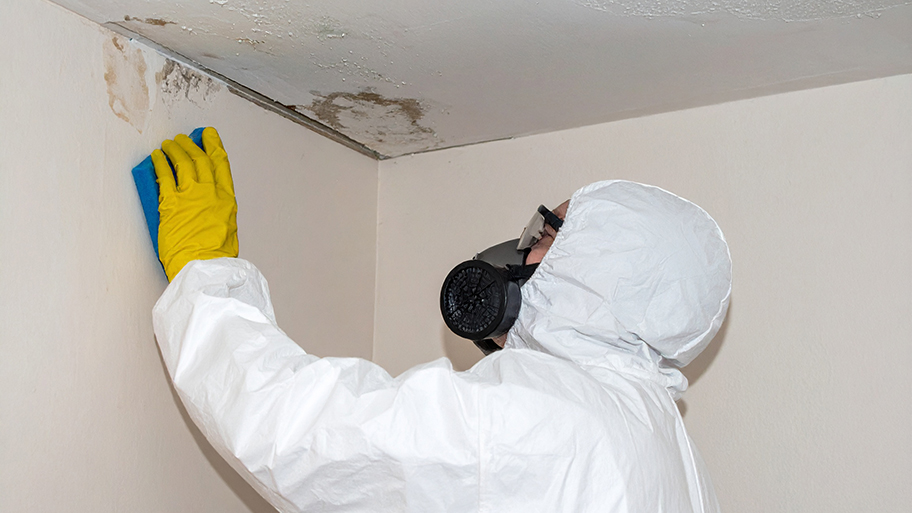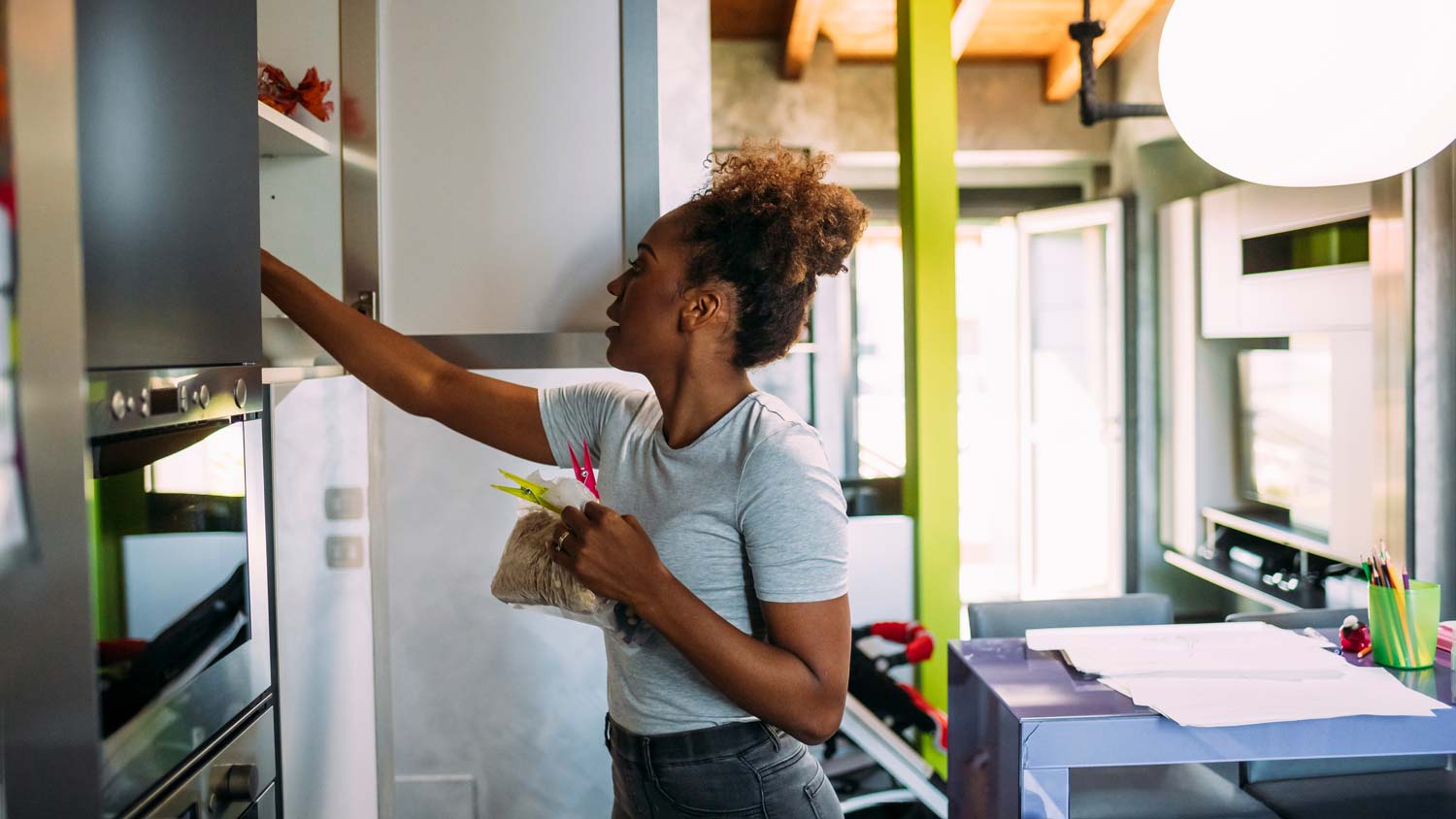
Mold remediation cost can quickly escalate. But if you have mold in your home, the cost for mold remediation is worth it.
Learn how to detect this nasty threat—and get rid of it once and for all


Common causes for mold and mold types
A mold inspection by a local professional ranges from $299 to $1,014
Installing a vapor barrier costs $1,200 to $4,000
Crawl space encapsulation runs around $5,500, but is your best defense
Discovering the hidden menace of mold in your crawl space is a common challenge many homeowners face—and can seem insurmountable. Beyond causing health concerns and structural damage, it can quietly sabotage indoor air quality upstairs. But fear not—you can secure a safe and healthy home by understanding mold’s insidious ways and taking decisive action. Here is what you need to know about saying goodbye to mold and saying hello to peace of mind.

Cramped, damp, and hot, crawl spaces are notorious for accumulating sneaky moisture. It is one of the top reasons for a crawl space inspection. Here are the common causes of mold growth, plus solutions for tackling the problem.
Flooding from rain and storms seeping through foundation walls is a common cause of mold growth in crawl spaces. At worst, water enters the living area above, making your home uninhabitable. Signs of flooding include puddles, standing water, high humidity, musty odor, and insects or rodents, which are attracted to the damp environment.
Luckily, there are plenty of solutions for protecting your crawl space from excess water. Installing a vapor barrier, a thick, durable, waterproof plastic or foil sheet installed on the crawl space floor or walls, in a crawl space is one option. You can expect to pay between $2 to $4 per square foot for materials and labor costs, with a total estimate ranging from $1,200 to $4,000.
A sump pump is another option for keeping a crawl space dry, especially in areas with extreme flood risk. It helps homes stay mold-free by automatically pumping water away from your home's foundation. A local sump pump installer can help you determine the best placement. The typical price range for installation is $640 to $2,100.
Taking swift action to tackle culprits like leaky pipes is an absolute must when it comes to protecting your crawl space from mold. Not only can leaks affect your energy costs, but they can also lead to extensive water damage that gives mold a cozy place to call home.
Puddles are a clear-cut indicator of a plumbing issue, but also keep an ear out for sounds of water running, watch out for drippy or corroded pipes, and be mindful of rising humidity levels. Seeking the assistance of a local plumber to address leaks is essential, as it can have a far-reaching impact on the overall condition of your home.
Simply put, crawl spaces must be airy or they will trap humidity, which increases moisture levels and condensation. Water can’t escape without proper circulation, creating a damp paradise where mold can thrive.
You may need to repair or unblock existing vents so natural cross-ventilation can come to the rescue. Or you can step up your game by installing a venting system that is manually or automatically controlled.
Warm climates can also contribute to high humidity levels in crawl spaces putting homes at greater risk of mold invasion. A portable dehumidifier can help temporarily, but a local HVAC contractor can install a dehumidifier designed specifically for crawl spaces. But here's the catch: dehumidifiers will only work wonders in an encapsulated crawl space—more on that next.
Wood, insulation, and debris create a buffet for mold, enticing it to thrive. When mold starts to feast on timber joists and beams, it is slowly gnawing away at your home's structural integrity.
Crawl space encapsulation is the most efficient way to protect against a mold takeover. It creates a controlled and conditioned environment, starting with a vapor barrier and additional sealing and insulation, but can be pricey—the average cost for a professional installation hovers around $5,500.
Even the best-laid concrete foundation can't escape the inevitable cracks that can appear and grow after several decades, ultimately allowing moisture to creep in. The most efficient way to address this issue is to hire a qualified contractor to fill and seal any cracks before starting mold remediation.

Household mold isn’t just gross; it’s harmful to both people and pets, making remediation a priority for a safe and healthy living space. Adverse effects include respiratory issues, allergies, and skin irritation, and in some cases, prolonged mold exposure can worsen existing health conditions according to the Center for Disease Control and Prevention’s (CDC) guide for mold clean up.
But here’s the thing: if your crawl space smells, or you think you see mold lurking, pinpointing the specific species—and ultimately getting rid of it—is best left to trained professionals. A mold inspection by a local pro ranges from $299 to $1,014, depending on the square footage and your location. Moreover, if your crawl space is difficult to access, it may add to the overall cost.
You might spot this mold is various shares of olive green, brown or even black, often huddled together in clusters. When viewed closely, Cladosporium can also have a powdery or fuzzy texture. But here's the twist: the color of any mold can change depending on the surface it is growing on.
This type of mold may appear green, yellow, or black, with a fluffy or cotton-like texture. Aspergillus colonies often have a characteristic circular or oval shape, with radiating branches forming from a central point.
The mold appears as blue or bluish-green with a velvety texture and often forms circular colonies. While you probably already know that some Penicillium species have beneficial uses, the stuff that may be lurking in your home does not.
Also known as the infamous black mold, Stachybotrys is one of the most dangerous types of mold. Fortunately, it is less prevalent in the U.S. than other varieties, but identifying it can be a real puzzle since different molds can also be black.
Beware—mold removal isn't a walk in the park. It is a complex and labor-intensive task best left to the pros who have the gear and know-how to handle the job and ensure a clean and healthy environment.
Now, let's talk about the dollars and cents: the cost to clean a crawl space can range from $500 to $4,000—there might be extra fees for dealing with hazardous materials.
According to data from Angi customers, most people (35.2%) need mold removed from their interior walls or ceiling, and 21.5% need mold removed from a basement or crawl space. Mold is commonly found in rooms that see a lot of moisture, so keep a lookout in your bathroom, kitchen, and basement. Call a pro as soon as you notice signs of mold to keep a small growth from becoming a much bigger problem.
Prevention is the name of the game, especially if you want to avoid hefty repair bills, but there are a few simple ways to keep the mold monsters at bay:
Consider working with professionals to ensure the ground around your home slopes away to prevent water from entering your crawl space and check your gutters, too. Ensure those downspouts function correctly and pour away from your home's foundation.
Lastly, remember to schedule a crawl space inspection every other year. A thorough check-up will catch sneaky issues that might lead to mold growth, ultimately saving you thousands of dollars and a massive headache.
From average costs to expert advice, get all the answers you need to get your job done.

Mold remediation cost can quickly escalate. But if you have mold in your home, the cost for mold remediation is worth it.

The cost of a mold inspection might seem high, but it’s one of the best investments you can make for your health and home. Read on to learn cost-saving tips.

Learn how to check for mold after water damage to prevent dangers to your home and health. You should assume that mold is present whenever there is a high-moisture event at your home.

Common reasons for mold in kitchen cabinets include high humidity and leaks. Keep reading to learn more about why mold is growing in your kitchen cabinets.

When is mold remediation required at your home? We can help you decide whether the musty odor or the patch of mold you’re experiencing requires a pro’s help.

Got mold on your washing machine? Follow this guide to learn how to clean mold from a washing machine and make your laundry smell fresh.